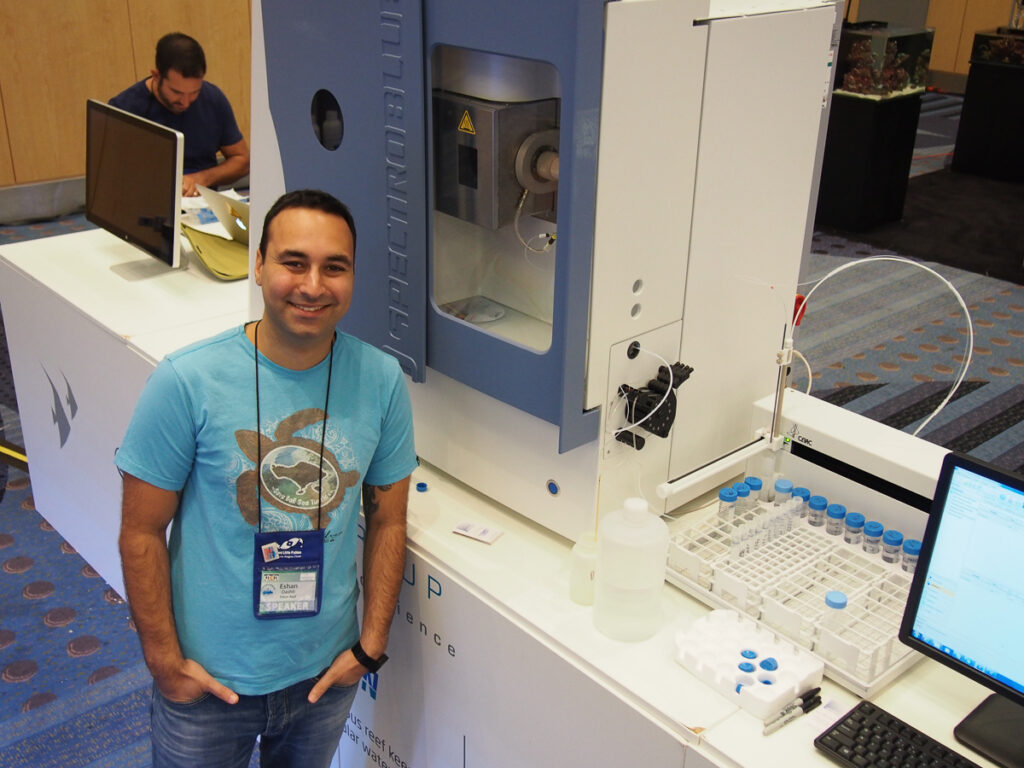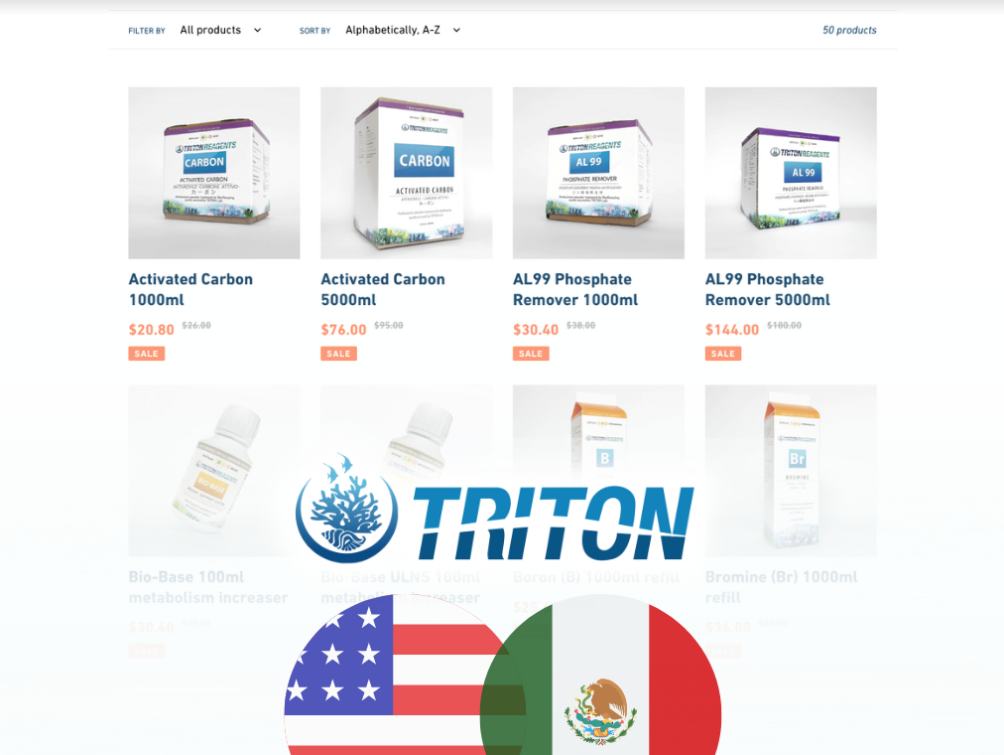Two new TRITON online stores are now operating in the US and Mexico, bringing much better availability to the regions along with an additional level of support.
Now customers in North and Central America can send off their ICP and N-DOC tests and get direct links to the TRITON products they need to fix their issues along with other products to benefit coral growth and color in their aquariums. Login to your account to find your results and a link directs you to the specific products that are most important to purchase and use. A simple click will add all of the products that you need to fix and/or enhance your water quality directly into your basket.
TRITON has pioneered ICP testing for reef aquariums since 2008 and now owns and operates four labs around the world. Together with their more concentrated and more flexible product range TRITON is now providing additional focus towards the North and Central American markets. Not all aquarium ICP tests are the same and TRITON developed methods and produced supporting machines for their own laboratories that are proprietary to TRITON like the Syringe Injection System (SIS).
These systems allow TRITON to combat typical ICP lab machine problems like potassium and sodium ionization and the separation of macro and trace elements measurements. TRITON is trusted and proven by the aquarium industry as they were the first to bring this new testing technology and make it usable for reef aquariums. TRITON started on this path almost a decade before anyone else and is the most experienced company testing seawater today. All systems are remotely operated by TRITON’s world-renowned experts in the aquarium field.
We asked the masters of aquarium ICP a few questions about how these machines operate. Here’s a deeper dive into ICP…

How does an ICP machine actually work to test aquarium water?
This could be a very long answer but in short, there are two stages, separation and detection. In the case of an ICP-OES, for separation you need to vaporize the sample prior to introducing it to the plasma where, at temperatures around 10,000 degrees celsius, all atoms are excited to a higher stage. While moving toward the tip of the plasma these atoms then cool and release light and the light has a specific color (wavelength) for every atom. In the detection unit, the wavelength and intensity of the light are detected and reported to the system. The wavelength of the light identifies the element and the intensity of the light quantifies the amount.
What’s the difference between blue and green ICP machines?
Overall there is no great difference between these two machines, especially in regard to seawater analysis. While the Green is a newer version of the Blue, the biggest misunderstanding for ICP machines, and the more important difference, is if the machine used is an EOP (End On Plasma) or SOP (Side On Plasma) configuration. That said, regardless of if the Spectro machine is a Blue, Green, or Arcos, they can all be purchased in the EOP or SOP configuration. It is generally understood that an EOP is much more sensitive than an SOP but is less robust (ie. it needs more cleaning).
With an EOP you can reach between 5 and 7 times greater limits of detection (LOD) and this is why TRITON purchases machines with this configuration. What caused confusion when the latest Spectro Green was released, was that it had a newer version of the SOP with a DSOI (Double Side On Interface) which now can reach better LOD, but only in comparison to the standard SOP configuration (ie. with some elements it lowered the LOD X2). The EOP still remains much more sensitive than the SOP-DSOI for seawater analysis.
Tell us about calibration and how many times an ICP machine should be calibrated.
This depends on the “Method of Analysis” that has been developed for that machine. There is no need to calibrate a machine daily anymore as there are different strategies to ensure that your calibration is still valid.
How is the data interpreted? Can anyone read the results in the lab?
This also depends on the Method of Analysis which, in our case, always includes the quality control procedures that we developed for testing seawater back in 2008. The raw data from the machine is somewhat readable but should not be directly used prior to quality control by an individual who is highly experienced with the Method of Analysis and understands its implicit points of weakness. In the case of TRITON, Ehsan Dashti performs quality control for all results, as he is the developer of our Method of Analysis and has over 15 years of experience in ICP testing aquarium water. This is the longest in our industry.
Shop TRITON US https://www.tritonreef-shop.com/
Shop TRITON Mexico https://www.tritonreef-shop.mx/



